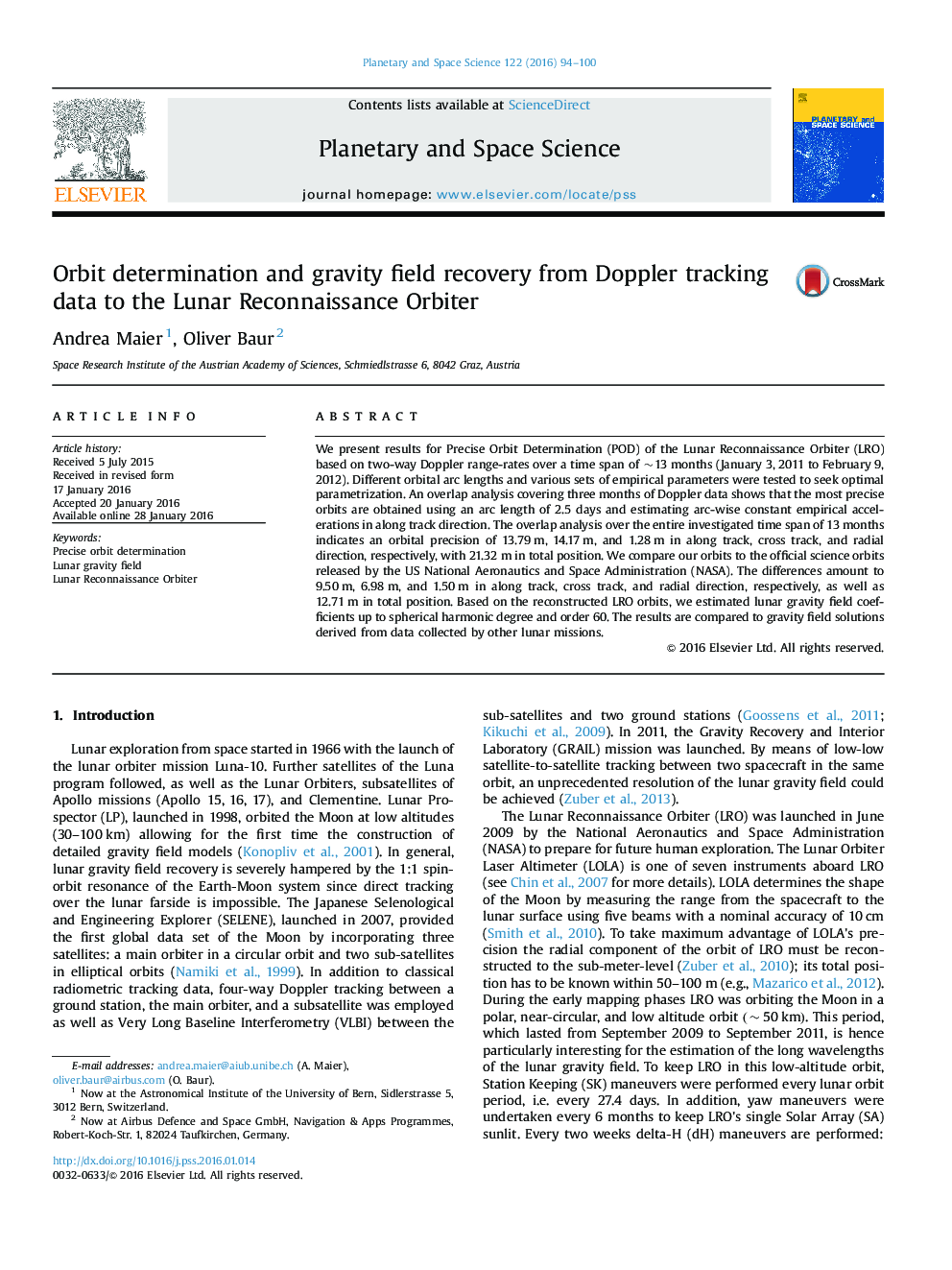| Article ID | Journal | Published Year | Pages | File Type |
|---|---|---|---|---|
| 1780873 | Planetary and Space Science | 2016 | 7 Pages |
Abstract
We present results for Precise Orbit Determination (POD) of the Lunar Reconnaissance Orbiter (LRO) based on two-way Doppler range-rates over a time span of ~13 months (January 3, 2011 to February 9, 2012). Different orbital arc lengths and various sets of empirical parameters were tested to seek optimal parametrization. An overlap analysis covering three months of Doppler data shows that the most precise orbits are obtained using an arc length of 2.5 days and estimating arc-wise constant empirical accelerations in along track direction. The overlap analysis over the entire investigated time span of 13 months indicates an orbital precision of 13.79Â m, 14.17Â m, and 1.28Â m in along track, cross track, and radial direction, respectively, with 21.32Â m in total position. We compare our orbits to the official science orbits released by the US National Aeronautics and Space Administration (NASA). The differences amount to 9.50Â m, 6.98Â m, and 1.50Â m in along track, cross track, and radial direction, respectively, as well as 12.71Â m in total position. Based on the reconstructed LRO orbits, we estimated lunar gravity field coefficients up to spherical harmonic degree and order 60. The results are compared to gravity field solutions derived from data collected by other lunar missions.
Related Topics
Physical Sciences and Engineering
Earth and Planetary Sciences
Geophysics
Authors
Andrea Maier, Oliver Baur,
